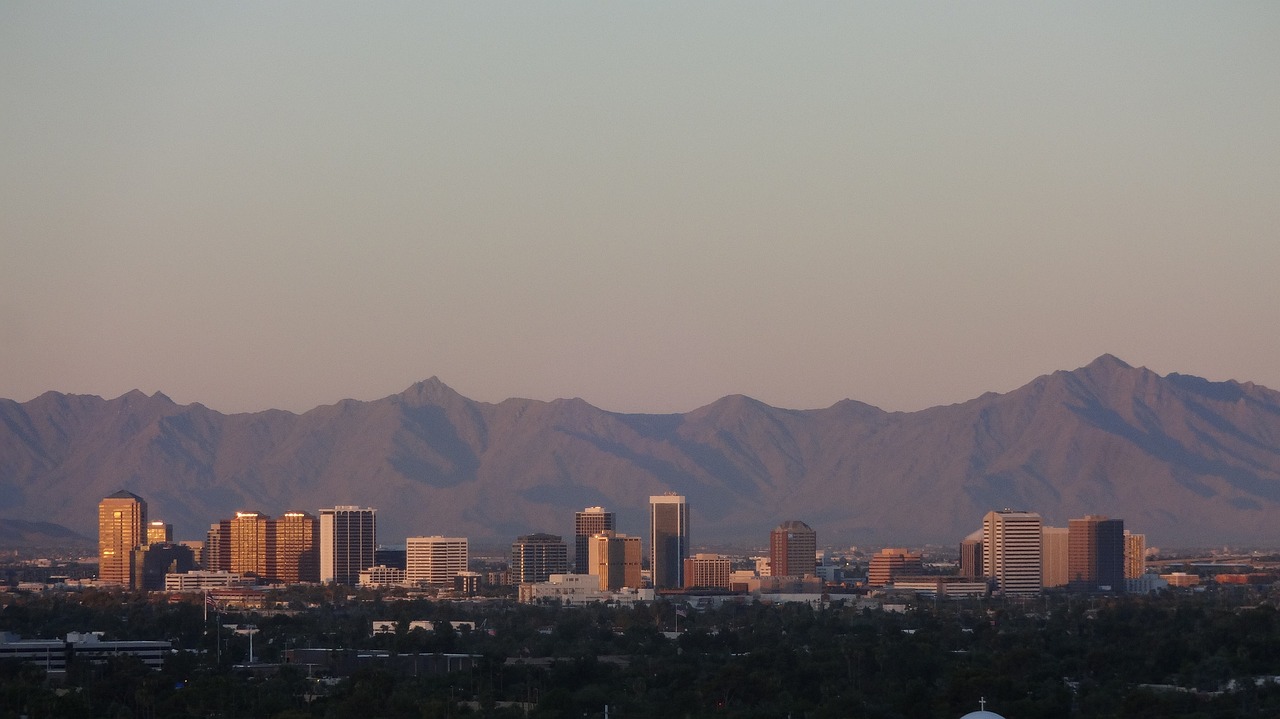Looking for a new adventure? Pinnacles National Park is a hidden gem in California. This guide will show you its amazing rocks, wildlife, and trails. Get ready for an adventure!
Key Takeaways
- Pinnacles National Park in California was formed by volcanic activity 23 million years ago, creating unique rock formations and caves.
- The park is home to over 400 species of bees and the rare California condor, which has been successfully reintroduced into the area.
- Visitors can enjoy diverse activities like hiking on trails such as High Peaks and Balconies Cave Loops, rock climbing, wildlife viewing, and stargazing due to low light pollution.
- Pinnacles experiences a range of weather patterns with hot summers and mild winters. Spring brings wildflowers, making it a popular time for visits.
- Conservation efforts at the park include ongoing ecological research and monitoring to preserve its biodiversity.
Geography and Geology

Pinnacles National Park sits in central California, shaped by volcanic activity. The result is a landscape with unique rock formations and towering pinnacles.
Volcanic origins of the landscape
The landscape of Pinnacles National Park has a fascinating story. About 23 million years ago, volcanoes erupted and lava flowed in the area. This event formed the rocky structures we see today.
The movement of the Earth’s plates shifted these rocks from their original location to where the park sits now, near Soledad in Central California.
Over time, weather and erosion shaped these volcanic rocks into tall spires and pinnacles. These unique formations give the park its name. Nature carved out caves and canyons through these massive stones as well.
Visitors can explore this rugged terrain that stands as a testament to our planet’s dynamic history.
Unique rock formations and pinnacles
Pinnacles National Park is home to amazing rock formations and pinnacles that rise out of the earth. These structures are the result of volcanic activity over 23 million years ago.
Magma cooled and turned into rock. Then, erosion shaped these rocks into tall spires and unique shapes we see today.
Visitors can see these giant rocks up close on hiking trails. Some look like animals or faces. Others stand tall like towers. This park offers a special look at nature’s artistry, right before moving on to explore climate and ecology in the area.
Climate and Ecology
Pinnacles National Park experiences diverse seasonal weather patterns. The native vegetation and habitats support a range of wildlife, including the rare California condors.
Seasonal weather patterns
Pinnacles National Park sees a range of weather through the year. Summers get very hot, with temperatures often rising above 90 degrees Fahrenheit. This heat makes early morning or late evening the best times for hikes and exploring.
Winter brings cooler weather, with daytime temps ranging from 50 to 70 degrees Fahrenheit. Rain is common from December to February, making some trails muddy but giving life to waterfalls.
Spring is a special time in the park. Wildflowers bloom across the hillsides, thanks to mild temperatures and occasional rain showers. Many visitors come during this season for the colorful displays.
Fall also has its charm, with warm days and cool nights, though it’s drier compared to spring. Each season offers something unique for travelers looking for adventure or relaxation in nature’s beauty.
Native vegetation and habitats
Pinnacles National Park features diverse habitats, including chaparral, oak woodlands, and grasslands. You’ll observe over 1000 plant species here, such as the Gray Pine and Blue Oak.
The park also shelters numerous unique wildflower species like the Pinnacles Lupine and Padre’s Shooting Star.
The park is home to a variety of wildlife, including bats, deer, coyotes, and bobcats. In addition to these mammals, you can spot over 400 kinds of bees in the area. Notably, around 85% of California’s native bee species are found at Pinnacles National Park.
This rich vegetation sustains a thriving ecosystem that supports varied animal life.
Let’s dive into the captivating wildlife at Pinnacles National Park.
Wildlife at Pinnacles National Park
Pinnacles National Park boasts a rich variety of wildlife, from the iconic California condors soaring above to diverse bird species and mammals like bobcats and coyotes. The park’s bounty also includes a thriving native bee population, adding to its ecological diversity.
California condors
California condors, with their massive wingspans of up to 9.5 feet, are one of the most iconic and rare birds found in Pinnacles National Park. These remarkable creatures, once on the brink of extinction, have made a successful comeback due to ongoing conservation efforts.
Visitors can witness these majestic birds soaring through the skies as they take advantage of thermal air currents along the canyon walls.
The park’s California Condor Program plays a critical role in reintroducing these birds into their natural habitat. With only 22 condors left in the wild in 1987, this program has seen tremendous success, with over 300 free-flying condors now living across California, Arizona, and Baja California.
Observing these incredible birds is an unforgettable experience for anyone visiting Pinnacles National Park.
Diverse bird species and mammals
After observing the magnificent California condors, visitors can also encounter a wide variety of bird species and mammals in Pinnacles National Park. Over 149 species of birds have been recorded here, including the acorn woodpecker, oak titmouse, and golden eagle.
Mammals like bobcats, gray foxes, and the endangered Townsend’s big-eared bat are also found within the park.
In addition to these diverse bird species and mammals, Pinnacles National Park is home to unique flora and fauna that thrive in its rugged terrain. The park’s varied landscape provides habitats for many animals to flourish against the backdrop of stunning rock formations and lush vegetation.
Native bee biodiversity
Pinnacles National Park is home to a rich diversity of native bee species, contributing to the park’s vital ecological balance. There are more than 400 documented species of bees, including ground-nesting bees and cavity-nesting bees.
These essential pollinators play a crucial role in sustaining the park’s diverse flora by facilitating plant reproduction and ensuring the health of various plant communities. Among these bee species are important pollinators for rare plants found in the unique habitats within Pinnacles National Park.
The spacious wildlands at Pinnacles offer a haven for numerous native bee populations, with some endemic to the area. The varied floral resources available throughout different seasons provide sustenance for these valuable insects and contribute significantly to the overall biodiversity of this stunning national park.
Popular Activities
Explore Pinnacles National Park’s winding hiking trails, including the challenging High Peaks and scenic Balconies Cave Loops. For thrill-seekers, there are plenty of rock climbing opportunities, as well as birdwatching and wildlife viewing.
Plus, don’t miss out on the stunning night sky stargazing experience.
Hiking trails, including High Peaks and Balconies Cave Loops
Pinnacles National Park offers various hiking trails, each with its unique appeal. The park’s rugged landscape provides a perfect setting for outdoor enthusiasts. Here are the must-visit hiking trails:
- High Peaks: Traverse through stunning rock formations, narrow passageways, and climb high peaks for breathtaking panoramic views.
- Balconies Cave Loop: Experience the thrill of walking through a talus cave, then emerge onto the Balconies Cliffs for spectacular vistas of the surrounding rock spires.
Rock climbing opportunities
Pinnacles National Park offers thrilling rock climbing opportunities amidst stunning natural landscapes. Whether you’re a beginner or an experienced climber, the park’s diverse terrain provides something for everyone.
- Varied climbing routes suitable for all skill levels
- Unique formations and crags for traditional and sport climbers
- Spectacular views of the surrounding landscape throughout the climbs
- Professional guided climbing experiences available for those seeking instruction
Birdwatching and wildlife viewing
Visit Pinnacles National Park for an unforgettable wildlife experience. The park is home to over 149 bird species, including the magnificent California condor. You can also spot diverse mammals like bobcats and bats, adding thrill to your wildlife adventure.
Don’t forget about the native bee population that contributes to the vibrant ecosystem at Pinnacles.
Engage in birdwatching activities as you explore hiking trails and canyon floors. Bring along your binoculars and camera for an up-close encounter with various bird species such as golden eagles and prairie falcons.
Besides, keep an eye out for other wildlife inhabitants while you immerse yourself in this natural wonderland.
Night sky stargazing
After enjoying birdwatching and wildlife viewing, the adventure continues at Pinnacles National Park with breathtaking night sky stargazing opportunities. The park’s remote location in central California makes it an ideal spot for observing stars, planets, and constellations due to minimal light pollution.
Often visited by astronomers and astrophotographers, the clear skies offer a chance to witness celestial wonders such as meteor showers and the Milky Way’s vivid display.
Pinnacles National Park also hosts occasional astronomy programs led by knowledgeable rangers or local experts to enhance visitors’ stargazing experiences. These educational sessions provide insights into astronomical phenomena while showcasing the park’s commitment to promoting environmental awareness through nature-based activities like stargazing.
Whether camping overnight or joining a guided tour, witnessing the brilliance of celestial bodies above Pinnacles National Park is an unforgettable experience for outdoor enthusiasts and nature lovers alike.
Visiting Pinnacles National Park
When visiting Pinnacles National Park, you can choose from the West Side or East Side entrances for access. The park offers camping facilities and amenities to ensure a comfortable stay amidst its stunning wilderness.
West Side vs. East Side access points
The Pinnacles National Park has two main access points: the east and west sides. The West side is closer to Soledad, while the East side is nearer to Hollister and San Jose. Both entrances offer different trails, rock formations, and wildlife viewing opportunities.
On the West side, visitors can explore the High Peaks trail, while on the East side, they can enjoy the Balconies Cave Loop. Each entrance provides unique perspectives of the park’s diverse landscapes and ecosystems.
Visitors should consider their preferences for hiking trails and amenities when choosing between the two access points at Pinnacles National Park. The East Side offers a campground with more facilities such as showers and a visitor center compared to limited camping options on the West Side.
Overall, both sides have their own charm and attractions for travelers seeking outdoor adventures in Central California’s stunning scenery at Pinnacles National Park.
Camping facilities and amenities
Pinnacles National Park offers camping facilities and amenities for visitors to enjoy a comfortable stay amidst the natural beauty.
- Campsites equipped with picnic tables and fire pits
- Restrooms with running water and flush toilets
- RV-friendly campsites available for travelers with recreational vehicles
- Accessible campsites for persons with disabilities
- Group campsites for larger gatherings or events
Tips for a successful visit
When visiting Pinnacles National Park, keep these tips in mind:
- Plan your trip during the cooler months for more comfortable hiking and outdoor activities.
- Carry plenty of water, especially if you plan to explore the trails, as the climate can be dry and hot.
- Wear sturdy footwear suitable for hiking and climbing on rocky terrain.
- Check for trail and park alerts before your visit to stay informed about any closures or restrictions.
- Consider bringing binoculars for bird watching and stargazing gear for nighttime exploration.
- Pack a picnic to enjoy amidst the park’s stunning natural landscapes.
- Respect wildlife and their habitats by observing from a distance and not feeding them.
Prepare to make unforgettable memories at Pinnacles National Park!
Conservation and Stewardship
Pinnacles National Park is actively involved in the restoration of California condors, vital for maintaining ecological balance. Ongoing research and monitoring initiatives are essential for preserving the park’s biodiversity and natural beauty.
Reintroduction of California condors
In an effort to preserve and restore the balance of nature at Pinnacles National Park, the California condor reintroduction program has been a pivotal initiative. Since 2003, this program has aimed to support the recovery of these magnificent birds from near extinction.
With a wingspan of up to 9.5 feet, California condors are one of the largest flying birds in North America. These impressive creatures play a crucial role in maintaining ecological stability within their habitat by feeding on carrion, thereby preventing disease spread and contributing to natural ecosystem processes.
Through coordinated efforts with local wildlife organizations and conservationists, captive-bred condors have been released into the wild at Pinnacles National Park as part of ongoing conservation programs.
Visitors can catch glimpses of these iconic birds soaring through the sky or perched on rock formations while exploring designated areas within the park – testament to successful collaborative conservation initiatives that continue bolstering biodiversity in this unique environment.
Ongoing ecological research and monitoring
After the successful reintroduction of California condors, ongoing ecological research and monitoring are key to ensuring the sustainability of Pinnacles National Park’s unique ecosystems.
Scientists regularly study the park’s diverse habitats and native species to track changes in vegetation, wildlife populations, and climate patterns. Through this research, they gather crucial data about the health of the park’s ecosystem, aiding conservation efforts.
Park rangers conduct regular surveys to monitor the population trends of California condors and other wildlife species. They also analyze how factors such as temperature variations and human activity impact the park’s delicate balance.
The findings inform conservation strategies and help in managing visitor activities to minimize their impact on the environment. This ongoing ecological research ensures that Pinnacles National Park remains a thriving habitat for its diverse wildlife while offering visitors an opportunity to enjoy its natural beauty responsibly.
Conclusion
As you plan your visit to Pinnacles National Park, get ready for a unique adventure. The park’s volcanic origins have shaped its stunning landscape and distinctive rock formations.
You’ll find diverse wildlife, including the majestic California condors soaring above. Don’t miss out on the chance to hike the High Peaks and Balconies Cave Loops, or enjoy some stargazing under the night sky.
Whether it’s exploring caves or observing native bee biodiversity, Pinnacles offers an enriching experience for nature enthusiasts and outdoor adventurers alike!
FAQs
1. What is Pinnacles National Park?
Pinnacles National Park is a stunning place in California, known for its unique rock formations and diverse wildlife. It offers beautiful hiking trails, caves, and amazing views that attract many visitors every year.
2. What can I do at Pinnacles National Park?
At the park, you can hike on various trails, explore caves, and watch birds like the California condor. You can also enjoy picnicking or camping among nature’s beauty while taking in fresh air.
3. When is the best time to visit Pinnacles National Park?
The best time to visit is spring and fall when temperatures are mild. Summers can be hot, while winters may bring rain or cold weather. So plan your trip accordingly to enjoy outdoor activities comfortably.
4. How do I get to Pinnacles National Park?
To reach the park, drive from nearby cities like San Jose or Monterey. There are signs guiding you along major roads leading right into this natural wonderland where adventure awaits!







Leave a Reply